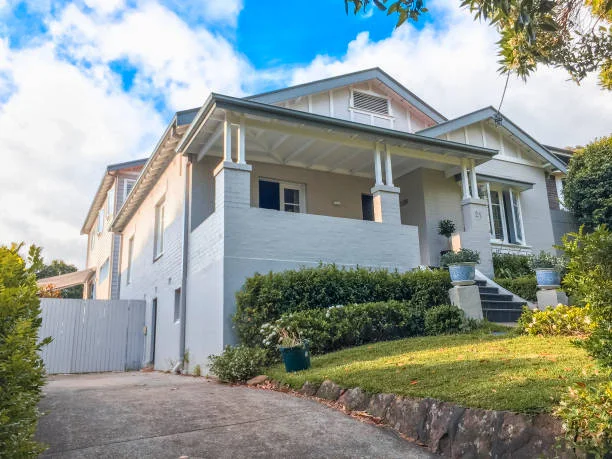Planning a home extension in Sydney’s Inner West is an exciting opportunity to enhance your living space without giving up the charm and convenience of your existing location. With rising property prices, tightly held housing stock, and limited land availability, homeowners are increasingly choosing to extend rather than relocate. But to ensure a successful outcome, careful planning and expert guidance are key.
In this article, we’ll walk you through the critical steps to plan a smooth, cost-effective, and regulation-compliant extension—from defining your goals to working with the right professionals, with insights specific to the unique character and requirements of Inner West Sydney.
Step 1: Define Your Goals and Budget
Before engaging any professionals, it’s important to have a clear vision for your extension. Are you trying to add more bedrooms for a growing family? Expand your living space to accommodate open-plan entertaining? Create a dedicated home office or rental studio for additional income? Each goal may influence the design, layout, and regulatory pathway for your project.
Be realistic and proactive about setting your budget. Home extensions in the Inner West typically start at $150,000 for smaller single-storey upgrades and can exceed $500,000+ for second-storey additions or complex structural work. Consider additional costs such as council fees, design services, site access challenges, and temporary accommodation if needed. Having a budget range will allow your designer and builder to recommend materials and design options that meet your financial goals.
Thanks for reading—why not stick around and see what else is new?
Step 2: Understand Inner West Regulations
The Inner West is a patchwork of local government areas (LGAs) including Inner West Council, City of Sydney, and parts of Canterbury-Bankstown, each with its own planning rules and zoning overlays. Many properties fall under conservation areas or heritage listings, particularly in suburbs like Annandale, Newtown, and Balmain.
Key considerations include:
- Development Application (DA) vs Complying Development Certificate (CDC): A CDC is a faster, private certification pathway but only applies if your design meets strict criteria. Heritage homes usually require a DA.
- Height and setback restrictions: These affect how much you can build up or out. Corner blocks, semi-detached homes, and narrow lots often require careful planning.
- Heritage overlays: If your home is in a heritage conservation area, your extension must be sympathetic to the original architecture, often using similar materials and preserving façade elements.
It’s essential to work with a professional who understands local planning laws and can liaise with council to avoid delays and costly rework.
Step 3: Choose the Right Team
Your team can make or break the success of your extension. Ideally, you’ll engage a group with a proven track record in the Inner West and a comprehensive approach to design, approvals, and construction. Your team may include:
- Architect or Building Designer: To conceptualise the design, ensure space efficiency, and prepare plans for council approval.
- Builder: Choose a licensed, insured builder with local experience and strong client testimonials. Ask for examples of past work in the Inner West.
- Certifier or Surveyor: Responsible for ensuring your build meets the Building Code of Australia (BCA) and provides final sign-off.
Look for teams that offer:
- End-to-end project management
- Fixed-price contracts with clear scopes
- Transparent timelines and milestone tracking
- In-house or partnered town planning support
Working with a design-build firm can streamline the process, reducing risk and saving time.
Step 4: Consider Design Trends and Lifestyle Needs
Designing your extension should reflect both the lifestyle you want and the character of your existing home. In the Inner West, there’s a strong focus on:
- Maximising Natural Light: Use clerestory windows, skylights, and glass doors to brighten narrow or shaded areas.
- Indoor–Outdoor Integration: Bifold or sliding doors connecting kitchens to courtyards or decks enhance livability.
- Heritage Integration: Maintain decorative features like high ceilings, timber fretwork, or fireplaces, while introducing clean-lined contemporary finishes.
- Multi-Purpose Rooms: Create flexible spaces that can evolve with your needs—like a guest room that doubles as an office.
- Energy Efficiency: Design for cross-ventilation, insulation, solar orientation, and sustainability.
Discuss your lifestyle needs—such as entertaining, family dynamics, and remote work habits—so your team can tailor the design to suit your day-to-day routine and future growth.
Step 5: Prepare for Construction
With approvals granted and a builder on board, it’s time to prepare for construction. This phase involves detailed planning, material selection, site preparation, and trade coordination.
Here are some key points to manage:
- Temporary Access and Living Arrangements: Will you live onsite during the build? If not, factor in rental accommodation and moving logistics.
- Material and Fixture Choices: Finalise selections early to avoid delays. Lead times can vary significantly.
- Communication Protocols: Set expectations for updates, variations, and site meetings. Weekly reports are common practice.
- Insurance and Safety: Ensure the builder has Home Warranty Insurance and public liability coverage.
Most Inner West home extensions take 3–6 months to complete, depending on size and complexity. Noise, dust, and disruptions are unavoidable, but a professional home extension builder will manage them effectively and keep your project on track.
Final Thoughts: Inner West Living, Upgraded
Extending your home in Inner West Sydney is a strategic investment—both financially and in lifestyle terms. It allows you to remain in a suburb you love, enhance the functionality and comfort of your home, and boost resale value.
By setting clear goals, understanding local planning controls, and working with experienced professionals, you can create a custom extension that respects the unique charm of your Inner West property while embracing modern living. Whether you’re looking to add space, improve flow, or future-proof your home, a well-executed extension offers long-term rewards for you and your family.
Catch up on the latest updates anytime from 2A Magazine.







